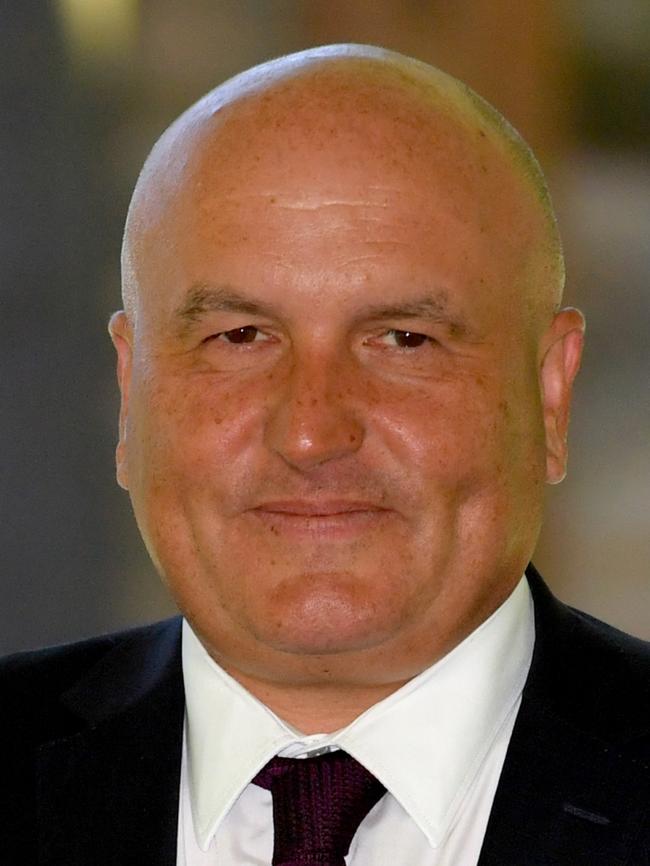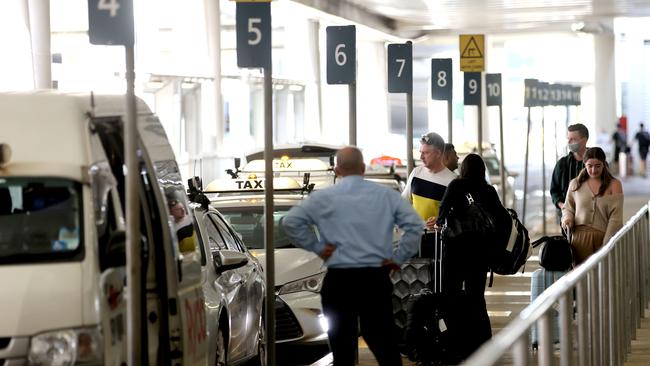Proposed $1 taxi surcharge to compensate drivers for Uber
A decision to boost the compensation given to taxi licence owners due to the impact of Uber has divided opinion in a reader poll.
NSW
Don't miss out on the headlines from NSW. Followed categories will be added to My News.
The taxi industry has welcomed a proposed billion dollar package to boost compensation to licence owners for the impact of Uber on the industry – but it has divided taxpayer opinion.
The payments could increase from $20,000 to $200,000 under a proposal being developed by the NSW Government.
Introduced in 2018 as a temporary measure to help the struggling industry, the payment would be funded by an extension to the $1 passenger service levy, currently applied to every trip in a taxi or ride-sharing car.
But the proposal has divided opinion in a Daily Telegraph poll with 51 per cent of 349 voters saying taxi licence holders should not receive extra compensation for Uber’s impact on their livelihoods.
One reader compared the situation to the invention of cars and its impact on the horse and buggy industry while another said it was similar to the emergence of streaming services over DVDs and VHS.
“How many video/record stores do you see now? It’s a fact of life that as the world moves forward some businesses will be made redundant,” Finny wrote.
Another reader, Joseph, agreed with the plan; “Cabbies have suffered. Look at the expense you have to go through to just get a cab on the road, before you put on a taxi plate. It’s not a level playing field,” he said.
NSW Taxi Council CEO Martin Rogers said the proposal, which could take compensation to as much as $200,000, was “a large increase” from the $50,000 suggested by the department last year.
But he wanted to see more details of the proposal.
Mr Rogers believed passengers would be happy to pay a little extra to support drivers.
“I’d like to think that passengers would appreciate the need to support those small business owners that through no fault of their own lost their value because of the change in the government regulations.”
He said new Transport Minister David Elliott had worked to quickly fix a problem that “had been dragging on for eight years”.
The value of taxi licences plummeted when ride-sharing services like Uber entered the market.
In 2016 then-transport minister Andrew Constance announced a $250m package to support the industry, giving licence holders $20,000 in transitional payments.

David Elliott, who took over the transport portfolio last year, has told the industry he did not believe the relief measures went far enough.
Earlier this month, Mr Elliott assured taxi drivers through a budget estimates hearing that the government “has got their back”.
He has told parliamentary colleagues that his first priority in the role was to ensure families who have had their livelihoods and assets trashed are given some dignity given that Uber has radically changed the market.
“I am very conscious of the fact that they, through no fault of their own, have lost the value of a business and, in many respects, tragically, that includes the life savings of families,” he said.
Senior sources indicated that given the position of NSW’s finances, any new budget proposals would be unlikely to pass the expenditure review committee unless they were offset by cuts or extra revenue measures.
That means unless the compensation proposal is fully funded through an extension to the passenger service levy, it is unlikely to be accepted.
There are about 5000 taxi licence holders in NSW who have average licence fees of around $28,240.

Uber landed on the global transport and travel scene 12 years ago on July 5, 2010 in San Francisco.
What started as a simple idea, evolved into a globally recognisable and powerful brand.
Uber drove its way into Australia in 2012, and was welcomed with open arms and excitement after success overseas.
The introduction was however understandably met with resistance from local taxi brands and drivers and caused havoc for the taxi industry.
These cabbies criticised the government’s response to the new ride-share brand making waves across the country, as drivers were not required to legally obtain a taxi licence, which is mandatory for all taxi drivers.
Taxi drivers lost their livelihoods as a result of this new, cheap and fun rideshare model.
Over the past five years, rideshare apps such as Uber have taken up around 30 per cent of the taxi business.
High and rising fuel prices in 2022 have posed a new challenge for taxi services.
Ride hailing and sharing apps such as Uber have been able to implement new surcharges to deal with the current high fuel prices however taxi drivers have been left with no choice but to cop fares which are based on government regulated rates, unique to each state.
Australian taxi brands and Uber will also under the pump in 2022 with the upcoming launch of Uber’s rival ride-hailing service inDriver in Brisbane in March.
This is likely to be followed by an expansion into several Australian capital cities with the newest industry player claiming their business model is too good to refuse.





